 |
||||||||||||||||||||||||||||||||||||||||||||
|
An Overview of
|
||||||||||||||||||||||||||||||||||||||||||||
Name & Biography |
Important Works |
|
|
Cindy Sherman
Biography: (American/1954) Sherman’s reputation was established on the basis of her Untitled Film Stills, a series of black-and-white photographs from the late 1970s in which the artist depicted herself dressed in the guises of clichéd B-movie heroines.Sherman gradually dispensed with representations of the female, often removing herself from the picture and moving toward more fantastic and lurid imagery, as in her Fairy Tales and Disasters series from the mid-to-late 1980s. The ever-increasing market for her photographs also prompted this turn, challenging her to attempt to create work that was “unsaleable” due to its visceral depictions of vomit, body parts, and grotesque fairy tales. Throughout her career, Sherman has appropriated numerous visual genres—including the film still, centerfold, fashion photograph, historical portrait, and softcore sex image—while disrupting the operations that work to define and maintain their respective codes of representation. |
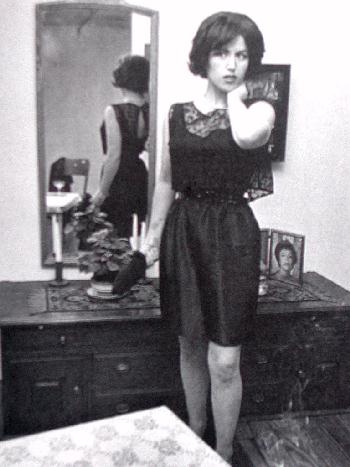
Cindy Sherman - Untitled Film Still #14 - 1978 |
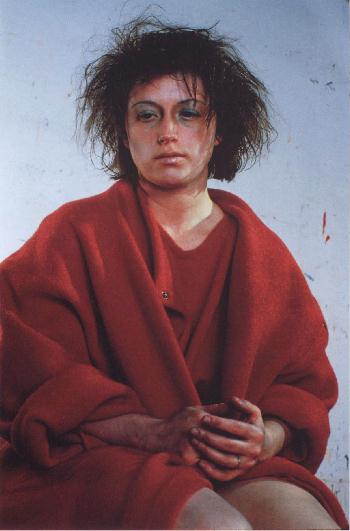
Cindy Sherman - Untitled #137 - 1984 |
|
Barbara Kruger
Biography: (American/1945) In 1965 Kruger started studies at Syracuse University, New York State, but transferred in 1966 to the Parsons School of Design in New York City. During the 1960s and 1970s she worked as a graphic designer for the American fashion magazine «Mademoiselle». In 1980 she was awarded a PS1 (Project Studio One) grant. Her artistic style is highly influenced by her career as a graphic designer.She layers found photographs from existing sources with pithy and aggressive text that involves the viewer in the struggle for power and control that her captions speak to. In their trademark black letters against a slash of red background, some of her instantly recognizable slogans read “I shop therefore I am,” and “Your body is a battleground." Much of her text questions the viewer about feminism, classicism, consumerism, and individual autonomy and desire. Kruger’s work has appeared on billboards, buscards, posters, a public park, a train station platform in Strasbourg, France, and in other public commissions. |
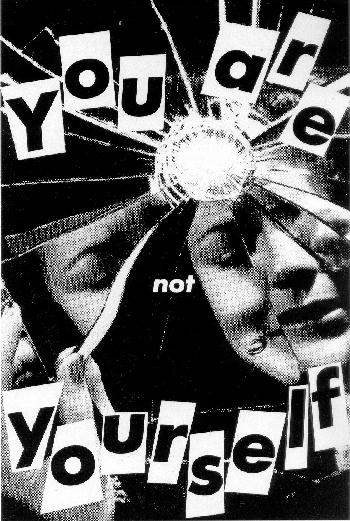
Barbara Kruger - You Are Not Yourself - 1984 |

Barbara Kruger - Untitled - 1986 |
|
Joyce Wieland
Biography: (Canadian/1931-1998) Wieland pioneered the idea of women working together to create art pieces and was the first artists to hire quilters to make quilted art pieces. Her "Reason Over Passion" quilt hung in 24 Sussex Drive, the home of Canadian Prime Minister Pierre Trudeau during the 1970s (24 Sussex is the Canadian equivalent of the White House).In addition to her quilted art pieces, Wieland also painted, wrote and directed her own movies (The Far Shore), numerous filmic experiments and was an important figure in the Canadian and American art scene during the 1970s and 1980s. She died in Toronto in 1998. |
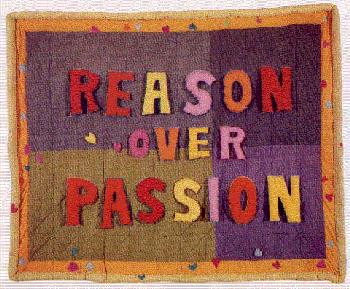
Joyce Wieland - Reason Over Passion - 1968 |
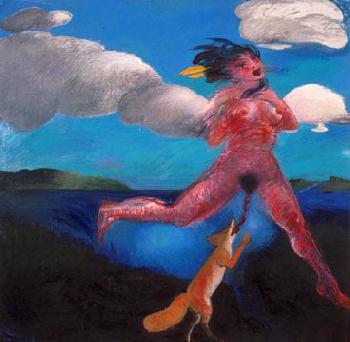
Joyce Wieland - Woman and Fox - 1986 |
|
Kiki Smith
Biography: (American/1954) Smith often uses silicon, bronze, glass, wax and a variety of materials in her sculptures of men and women.She works with abject themes (especially bodily fluids such as blood, sweat, shit, urine, milk, semen, pus) in order to bring out a sense of revulsion in viewers. She tends to sculpt women more often, and often uses fetal/sexual positions. |
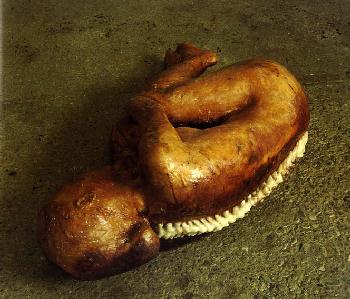
Kiki Smith - Bloodpool - 1992 |

Kiki Smith - Lilith - 1994 |
|
Frida Kahlo
Biography: (Mexican/1907-1954) On September 17, 1925, at about age 18, Frida Kahlo was involved in a serious bus accident which left her with a broken spinal column, a broken collarbone, broken ribs, a broken pelvis, and 11 fractures in her right leg. In addition her right foot was dislocated and crushed, and her shoulder was out of joint. For a month, Frida was forced to stay flat on her back, encased in a plaster cast and enclosed in a boxlike structure. Her art is highly influenced by her physical condition.Her sometimes-husband Diego Riviera was a very successful artist, but was known for not wanting to be tied down with her, and frequently had affairs with other women. Kahlo suffered from depression, had 30 operations during her lifetime. She also turned to alcohol, drugs, and cigarettes to ease the pain of her physical suffering. She divorced Diego in 1940 but remarried again a year later. Their marriage remained tumultuous, but they somehow suited each other. She liked to tell dirty jokes and frequently used the words "fuck" and "shit". Frida only had one exhibition in Mexico and it was in the spring of 1953. Frida's health was very bad at this time and doctors told her not to attend. Minutes after guests were allowed into the gallery, sirens were heard outside. The crowd went crazy for outside there was an ambulance accompanied by a motorcycle escort. Frida Kahlo was being carried from it into her exhibition on a hospital stretcher. The photographers and reporters were shocked. She was placed in her bed in the middle of the gallery. The mob of people went to greet her. Frida told jokes, entertained the crowd, sang, and drank the whole evening. The exhibition was an amazing success. During the same year as her exhibition, Frida had to have her right leg amputated below the knee due to a gangrene infection. She attempted suicide a couple of times. On July 13, 1954, Frida died. No official autopsy was done. Suicide is rumored. Her last words in her diary read "I hope the leaving is joyful and I hope never to return".
|
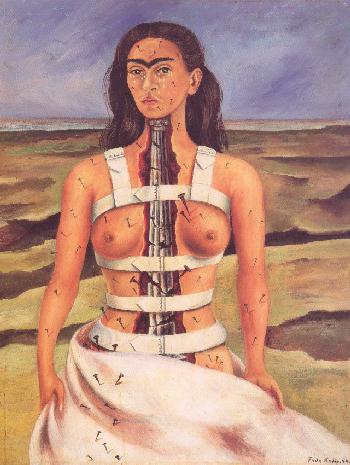
Frida Kahlo - The Broken Column - 1944 |
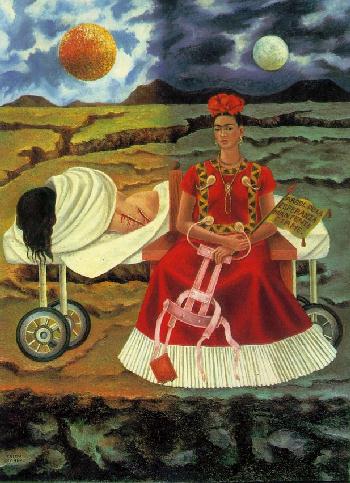
Frida Kahlo - Tree of Hope - 1946 |
|
Lorna Simpson
Biography: (American/1960) Since the 1980s, Lorna Simpson has been challenging gender and racial stereotypes in her provocative photographs, installations, and film works.She often mixes text with her images to push the viewer towards the proper conclusions, but does so in subtle fashion. She often uses herself as the model, but rarely shows her whole face. Her works are often photography with mixed media. More recently, she has begun making film art such as "Lorna Simpson: 31", which is a collection of 31 short films. |
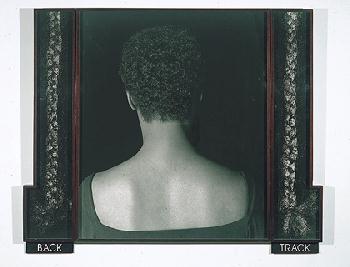
Lorna Simpson - 2 Tracks - 1990 |
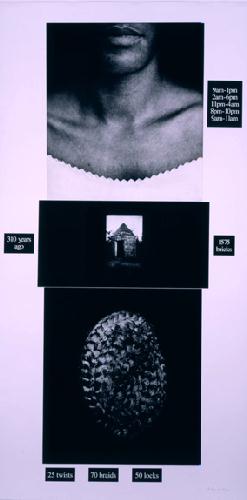
Lorna Simpson - Counting - 1991 |
|
Georgia O'Keeffe
Biography: (American/1887-1986) Growing up in Wisconsin, she began art classes at a young age and showed a large amount of talent.An event that drastically effected Georgia's art occurred when she was in art class one day. She typically painted everything rather small, and one day her teacher asked her the reasoning behind this. O'Keefe could not respond, but instead she created a huge painting as a joke. This carried on into Georgia's artwork, and soon she began painting on a very large canvas. Georgia's most well-known paintings are large paintings of flowers that often cover an entire canvas with just one blossom. The largest canvas that she ever painted was twenty-four feet wide (Sky Above Clouds IV, 1965). The size of the paintings made the flowers look very vaginal, and she was often asked if she was a feminist, to which she always replied no, but she is considered a feminist nevertheless because it wasn't just flowers that she made look vaginal. For example, her paintings of ice caves in New Mexico also look vaginal. She moved to New Mexico after her husband's death in 1946 and remained there until her death in 1986. "Nobody sees a flower really, it is so small - we haven't time, and to see takes time like to have a friend takes time." |

Georgia O'Keeffe - Jack in the Pulpit - 1930 |
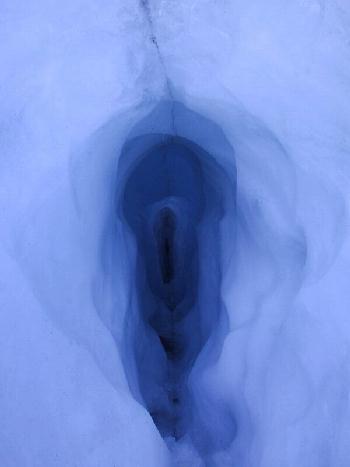
Georgia O'Keeffe - Ice Cave - circa 1950 |
|
The Guerilla Girls
Biography: (Americans/1985) A group of anonymous feminists in 1985 banded together to create the group known as the Guerilla Girls, and took as their mascot, a gorilla mask. The group members use the names of dead female artists like Frida Kahlo, Eva Hesse, Paula Modersohn-Becker, Käthe Kollwitz, Gertrude Stein, Georgia O'Keeffe.The group uses posters and postcard as well as public appearances to address the issue that women and non-whites are being excluded from the art world. In 20 years they have produced over 100 posters, stickers, books, printed projects, and actions that expose sexism and racism in politics, the art world, film and the culture at large. |
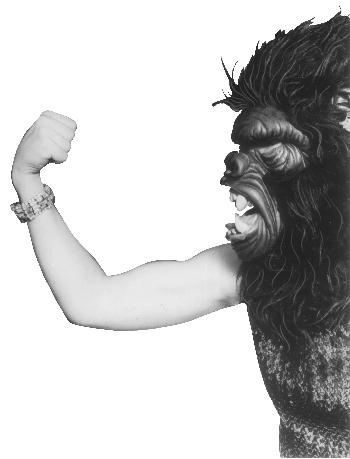
Guerilla Girls - Fist |
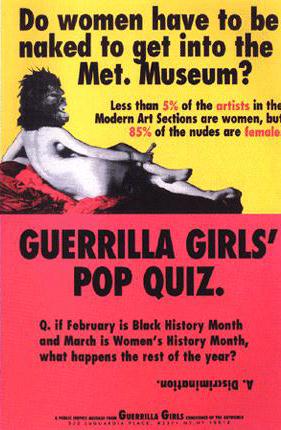
Guerilla Girls - Poster Samples |
|
Judy Chicago
Biography: (American/1939) Judy Chicago was born in Chicago to a Jewish family (her original name was Judy Cohen). In graduate school at UCLA she began to develop distinctly female imagery in her painting. Because one of her painting instructors deplored her "breasts and wombs" imagery, she began to move into sculpture.Judy taught at the California Institute for the Arts. During this period she was a leader of the Feminist Art Program which produced the 1972 installation known as "Womanhouse" to which she made images such as "Menstruation Bathroom" and wrote a performance piece: "Cock and Cunt Play". She used other women artists to help create her 1979 piece "The Dinner Party". She stole the idea of getting other women to help her from Joyce Wieland (see above), but unlike Wieland Judy Chicago never paid the people who worked for her. The project took 5 years to complete and she has since received a bad reputation for exploiting the work of other artists and taking the credit for herself. "The Dinner Party" was a monumental art piece, but is currently stuck in storage and hasn't toured in years. It appears that many art galleries are annoyed at Judy Chicago and are waiting for her to die before they start showing her work again. Her career has gone downhill ever since "The Dinner Party". She now lives in New Mexico. |

Judy Chicago - The Dinner Party - 1979 |
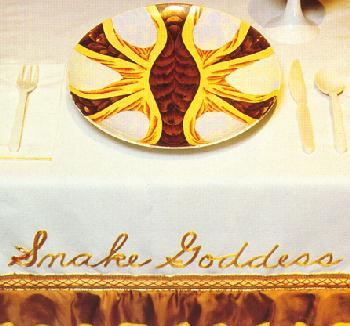
Judy Chicago - Snake Goddess - 1979 |
Feminist Artists of the 21st Century |
||
|
Jennifer Linton
Biography: (Canadian/1968) Using a combination of glass, drawing, paint and mixed media (cigarette wrappers and other things), Linton constructs images of a religious nature combined with a quirky look at sexuality.Using herself as the model frequently, Linton uses humour to poke fun at a particular idea (Catholic girls smoking), all the while using a "stained-glass aesthetic". She currently lives in Toronto, Canada. |

Jennifer Linton - Salomé - 2002 |
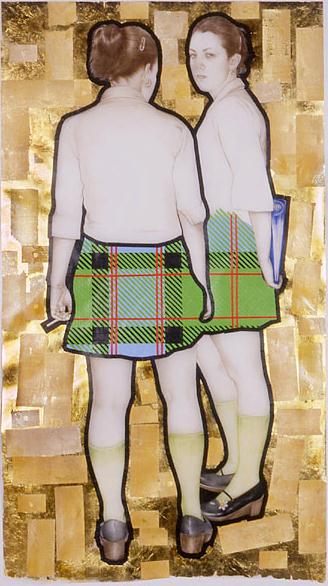
Jennifer Linton - Catholic Girls - 2005 |
|
Victoria Van Dyke
Biography: (Canadian/1979) Van Dyke was raped when she was 11 years old. The burden of her memories has caused her to create some highly disturbing art pieces and frequently discusses the idea of cannibalism.She uses cannibalism as a metaphor for evil within modern society, businessmen eating each other and eating the poor in order to make themselves fat/rich. She often titles her work with numbers, and uses models. She spent three years in a mental asylum, where she placed herself voluntarily. She was finally released in the Spring of 2005. She currently lives in Toronto, Canada. |

Victoria Van Dyke - Cannibal #2- 2001 |

Victoria Van Dyke - Saw #5 (I Want To Be An Amazon) - 2001 |
More Feminist Artists
More about Feminist Art
| Do you love fantasy / horror stories like Harry Potter and Buffy the Vampire Slayer? Maybe you will like the stories and novels of fantasy author Charles Moffat. For example you could read The Lilith Bloodstone Series available on Amazon Kindle and get necromantic zombie-killing action. |